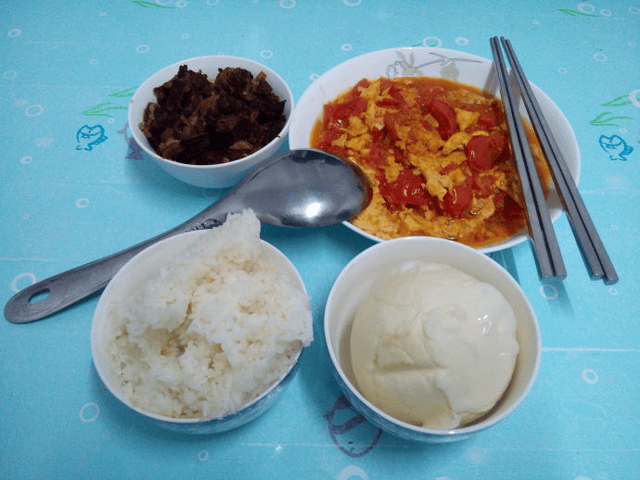When it comes to the differences between the North and South, the differences in staple foods are definitely undeniable. Southerners love rice, while northerners prefer wheat-based foods like noodles and steamed buns. Southerners dislike wheat-based foods because they think it causes weight gain, while northerners believe rice is harder to digest.
People from the North and South have sparked online debates to defend their favorite staples. So, when steamed buns and rice go head-to-head, which one is more nutritious? Which one is better for weight loss?
Let’s first look at the nutritional composition of rice and steamed buns in their raw state:
Per 100 grams of rice, it contains 116 calories, 70.9 grams of water, 25.9 grams of carbohydrates, 0.3 grams of fat, and 2.6 grams of protein.
Per 100 grams of steamed buns, it contains 223 calories, 43.9 grams of water, 49.8 grams of carbohydrates, 1 gram of fat, and 7.8 grams of protein.
From this perspective, steamed buns seem to have more calories and fat, but they also contain more protein. However, the main nutrient in both is carbohydrates, so there isn’t much of a difference.
Some might argue that this comparison is unfair because who eats raw rice and steamed buns? Indeed, different cooking methods can lead to different chemical reactions in food, affecting its nutritional value.
When the same amount of flour and rice is made into fluffy white rice and steamed buns, the water absorption and calorie content will differ. Cooked foods that absorb less water naturally contain more original ingredients and therefore have higher calories.
To turn raw rice into cooked rice, the key is to add water as rice absorbs a lot of water, reaching about 71% water content. This means that a 100-gram portion of rice can yield more than 200 grams of cooked rice.
On the other hand, steamed buns cannot absorb much water, with a water content of only about 44%. Comparing a 100-gram large steamed bun to a small bowl of 100 grams of rice, it becomes clear which is more filling.
So, which is more likely to cause weight gain, rice or steamed buns?
When it comes to weight loss, the key is to eat less but feel full. Therefore, foods should be low in calories but satiating.
Food with the same amount of calories, larger portions are more filling. Rice has a high water content, making it easier to feel full after eating a little. However, wheat flour has higher protein content, making steamed buns more satiating. But due to their lower water content and smaller volume, it’s easier to overeat them.
Furthermore, in terms of glycemic response, foods with a lower glycemic response are more satiating. Compared to rice, steamed buns have a slightly higher glycemic response.
In conclusion, there’s no clear winner between rice and steamed buns in terms of nutrition. If you want to lose weight, rice may be a better choice. But if you prefer steamed buns, be mindful of portion size and avoid overeating.
However, for overall health, it’s important to have a varied diet. Therefore, don’t just stick to one type of food; staple foods should be consumed in combination.
Pairing coarse and fine grains provides the body with more dietary fiber and B vitamins, which can help reduce the risk of diabetes, cardiovascular diseases, obesity, and other illnesses.
When cooking, consider adding legumes and coarse grains to white flour and rice. For example, adding red beans, mung beans, millet to porridge, or cornmeal and buckwheat flour to steamed buns not only enhances the flavor but also boosts nutrition.
Additionally, whole grains like quinoa, due to their low calorie content and rich nutrients, are more suitable for weight loss than regular white rice and are ideal complementary foods for babies.
In conclusion, when it comes to weight loss, whether you eat rice or steamed buns isn’t that important. The key is to have a balanced diet, proper combination of nutrients, and most importantly, to exercise regularly.


